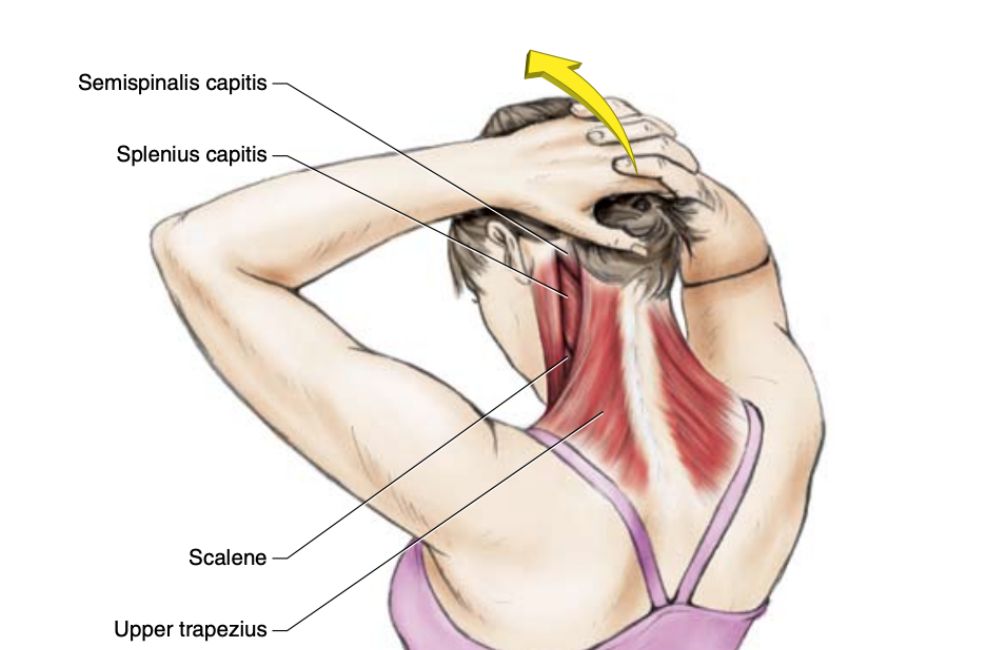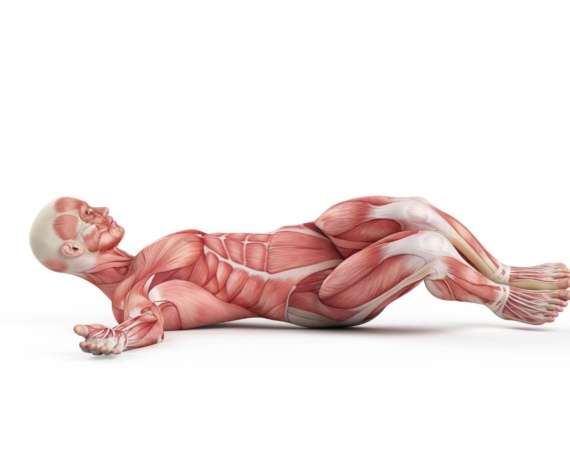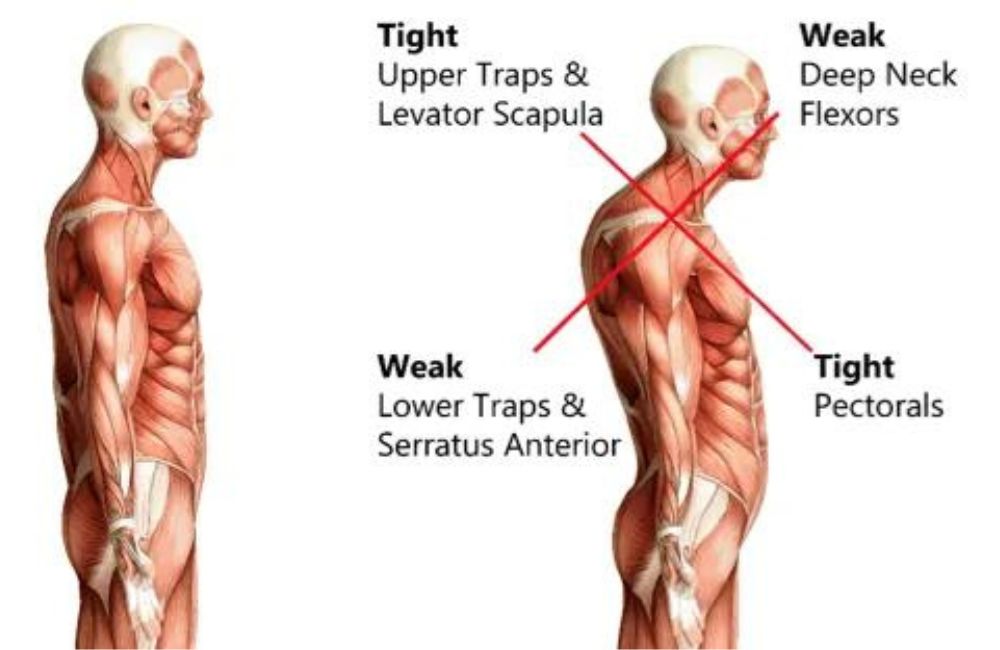
Combat rounded shoulders and sit Straighter with these simple stretches.
Rounded shoulders are a serious problem for many people today. This posture creates serious tension across the neck and upper back. Not to mention, rounded shoulders can predispose a person to injuries such as rotator cuff tears.
Luckily, with just a few simple exercises, you can slowly but surely correct your rounded shoulders.
In this article, I’ll outline some of my favorite stretches and strengthening exercises for correcting rounded shoulders and forward head posture (1).
Forward Head Posture and Rounded Shoulders
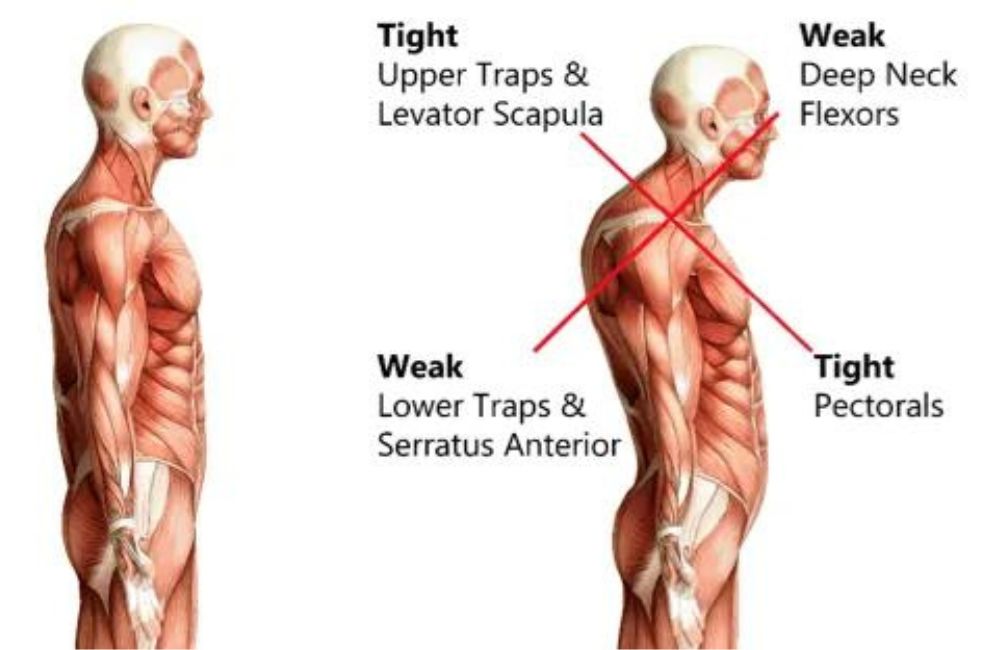
Rounded shoulders often occur in conjunction with an issue known as Forward Head Posture or FHP.
These related conditions put incredible strain on the upper body and they often lead to a host of orthopedic problems.
Unfortunately, our lifestyles naturally lead toward rounded shoulders and FHP. Sitting in the car, at the desk, or while at home forces us into poor posture.
You can combat this slumped posture in a number of ways. One option is to use corrective tape to cue your back and shoulder muscles to reverse the slumped posture. Another option is to use orthopedic cushions and other tools while sitting.
There is nothing wrong with the above two options. In fact, these methods can help tons of people overcome their posture-related issues.
However, exercise is one key element that is necessary to truly reverse rounded shoulders.
Next, let’s take a look at 7 of the best exercises that can help you accomplish this goal.
Top 7 Exercises for Correcting Rounded Shoulders and FHP
The first time you try these exercises, you may be frustrated by your lack of range of motion. However, this issue will resolve quickly, as long as you continue to practice.
I recommend that you complete these 7 exercises 3-4 times per week. Within each exercise, I’ll outline how to perform the movement, how long to hold the stretches, and what tools you should use.
1. Cat-Camel
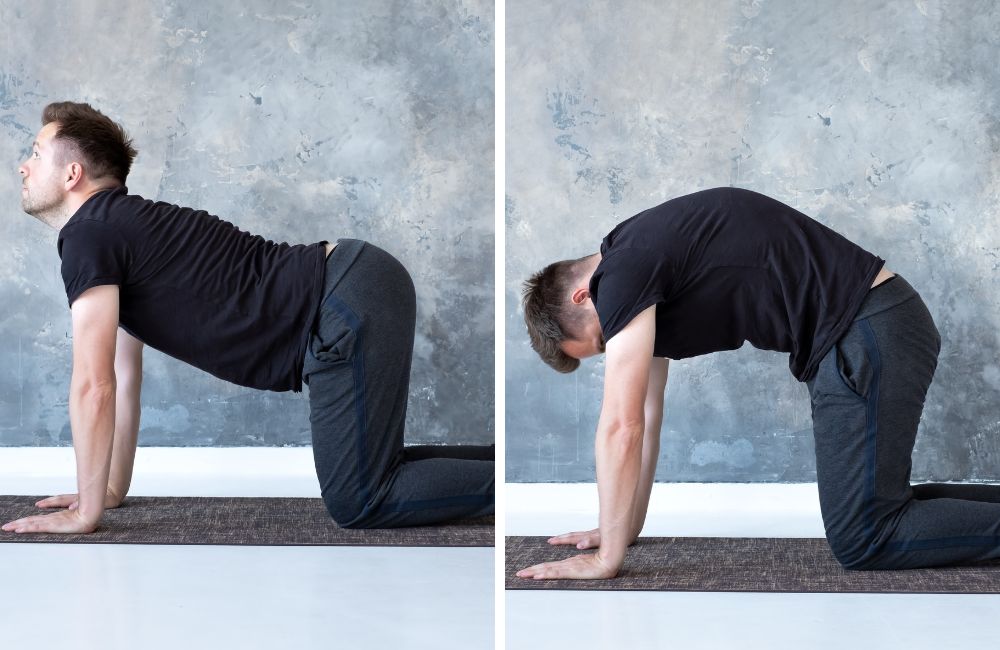
The cat-camel pose is a staple of many yoga classes. This movement is gentle enough for anyone to perform, but also extremely effective for improving spinal mobility.
How to Perform:
- Begin on your hands and knees, with your hands directly beneath your shoulders and your knees directly beneath your hips.
- Slowly, allow your stomach to sag towards the floor as you simultaneously extend your head backward.
- Hold this “camel” position for 10 seconds, then reverse these motions by rounding your back and tucking your chin to your chest (this is the “cat” position).
- Hold this position for 10 seconds, then return to the camel.
- Continue to alternate between these positions until you have completed 10 reps of each pose.
2. Bird Dog
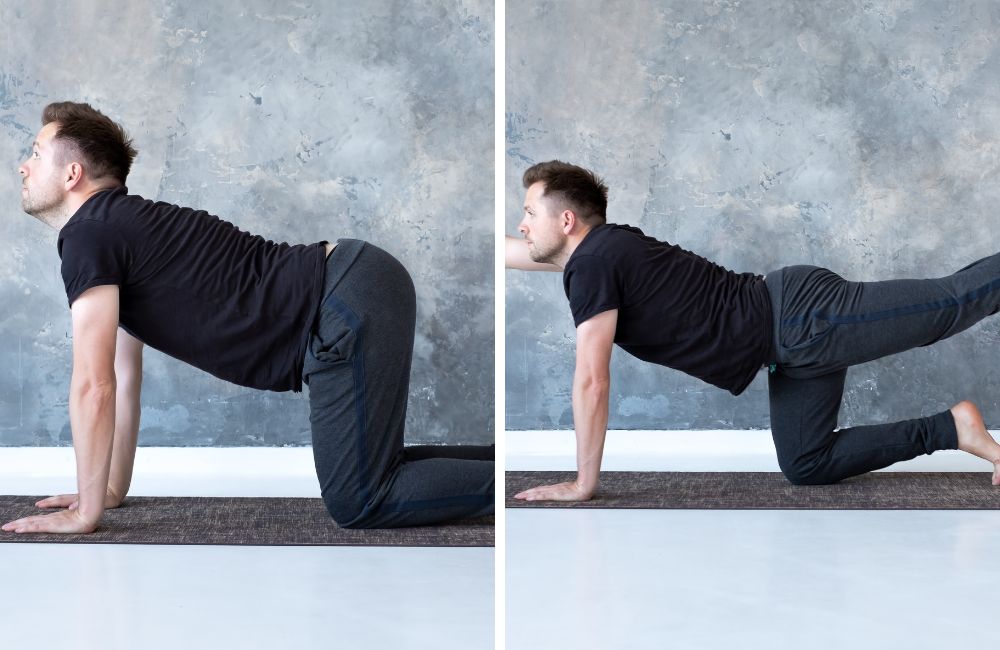
All of the best exercises seem to be named after animals. The bird-dog exercise is one of the best ways to improve spinal stability.
This is because the bird-dog specifically targets tiny little muscles in the spine, known as multifidi.
The multifidi are largely responsible for “fine-tuning” our spinal motions. By keeping these muscles strong, you’ll be able to stave off many types of back pain and reverse your rounded shoulders.
How to Perform:
- Start on your hands and knees, in the same position as described for the “cat-camel”, outlined above.
- Next, extend your right arm straight out in front of you, in line with your trunk.
- At the same time, extend your left leg behind you, also in line with your trunk.
- From this position, you should be able to trace a straight line from your right fingertips to your left toes.
- Hold this position for 10 seconds, then return to the start.
- Complete 10 reps per set, for 3 sets per session.
3. “No Monies”
This exercise has many different names (such as bilateral external rotation).
However, my favorite name for this move is “no money!” The exercise is so named due to the fact that it’s a similar motion to the one you would make if you were turning out your pockets to demonstrate that you did, indeed, not have any money.
No monies are terrific for rotator cuff strengthening. Plus, they are easy to perform anywhere, using just a simple resistance band.
How to Perform:
- In standing, grasp a resistance band with both hands, palms turned toward the ceiling and elbows bent to 90 degrees.
- Pull through the band by turning your hands outward, and keeping your elbows close to your sides.
- Then, once you’ve pulled the band out as far as possible, slowly allow your hands to return to the starting position.
- Complete 3 sets of 10 reps per session.
4. Prone T’s
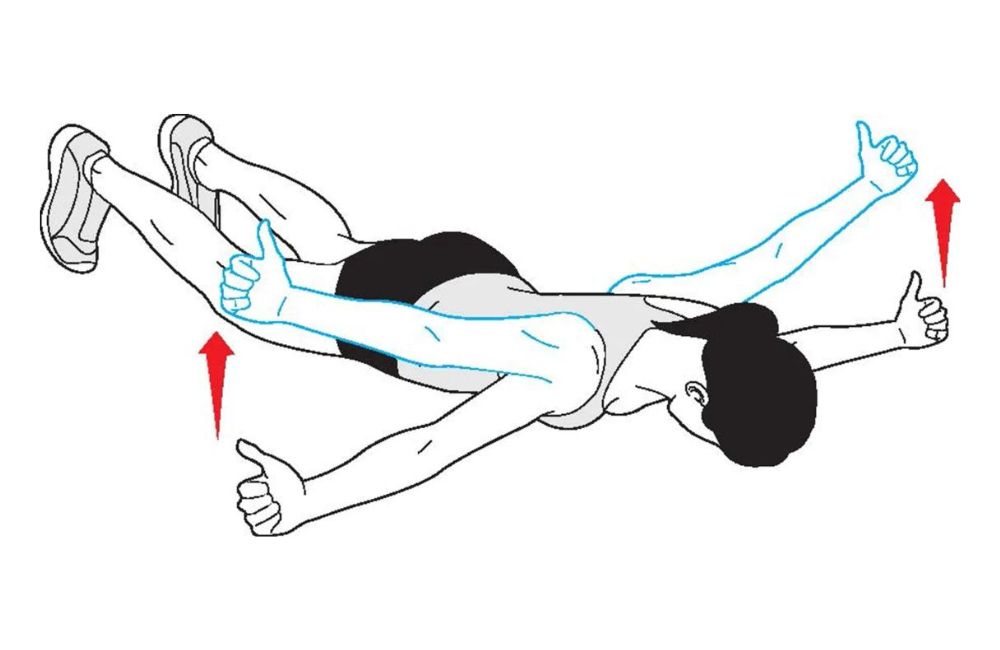
When it comes to rotator cuff strengthening and shoulder stability, there are few moves better suited to the task than the alphabet series. A’s, W’s, Y’s, and T’s are all terrific exercises for strengthening this area and for keeping your shoulders healthy.
How to Perform:
- Lie flat on your stomach, with your arms straight out to your sides.
- Next, elevate your hands toward the ceiling while simultaneously attempting to squeeze your shoulder blades together.
- Once you’ve reached the top of your range, slowly lower your hands back down into the starting position.
- Complete 3 sets of 10 reps per session.
5. Bent-Over Dumbbell Shoulder Extension
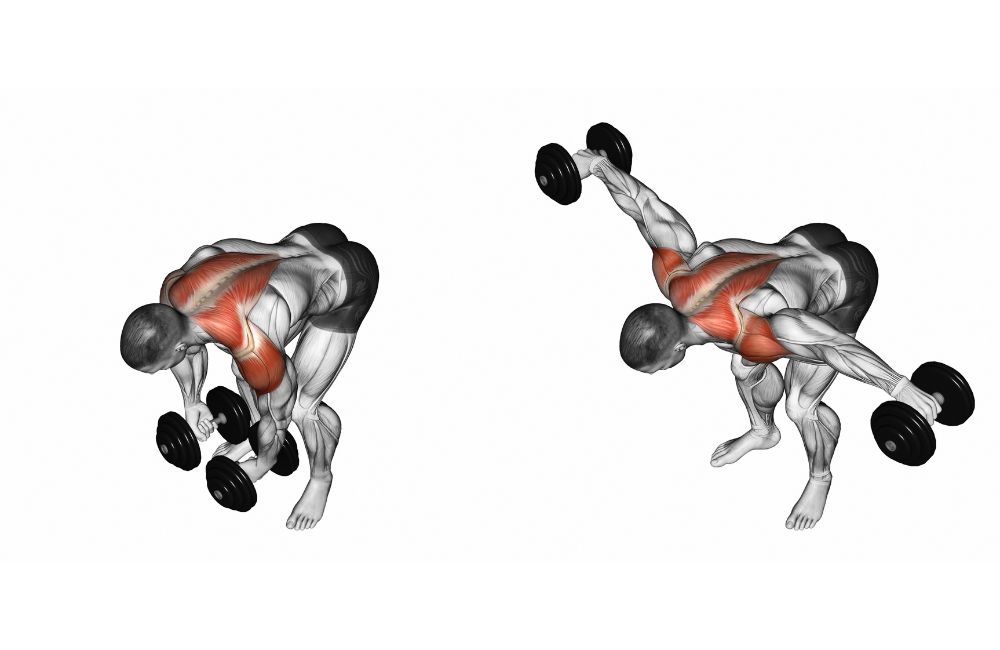
For this exercise, you’ll need some light dumbbells (or anything you have around the house that will give you a few pounds of resistance).
This move, like the prone T’s and others on this list, is great for improving rotator cuff strength, tricep strength, and general shoulder stability.
How to Perform:
- Start standing, with your feet roughly hip-width apart and with one weight in each hand.
- Next, bend forward at the waist until your trunk is roughly parallel to the ground.
- Then, while keeping your elbows straight, elevate your hands back and toward the ceiling.
- Once you’ve gone as far as you can into this range, slowly return the weights to the starting position.
- Complete 3 sets of 10 reps per session.
6. Prone Swimmers
Swimmers have incredibly strong core and shoulder muscles. In fact, if you have access to a pool, swimming a few laps of all the different strokes a few times a week can greatly reduce rounded shoulders.
This exercise mimics the freestyle swimming motion in order to take advantage of the many muscles used during this pursuit.
How to Perform:
- Lie flat on your stomach with your arms overhead and your legs out straight behind you.
- Next, extend your back so that your chest, arms, and legs all lift off of the ground.
- Then, elevate your left arm higher toward the ceiling as you simultaneously lift your right leg toward the ceiling.
- Perform this movement in an alternating fashion, as if you’re swimming laps for 15 reps per side, and 3 sets per session.
7. Chest-Opener Stretch
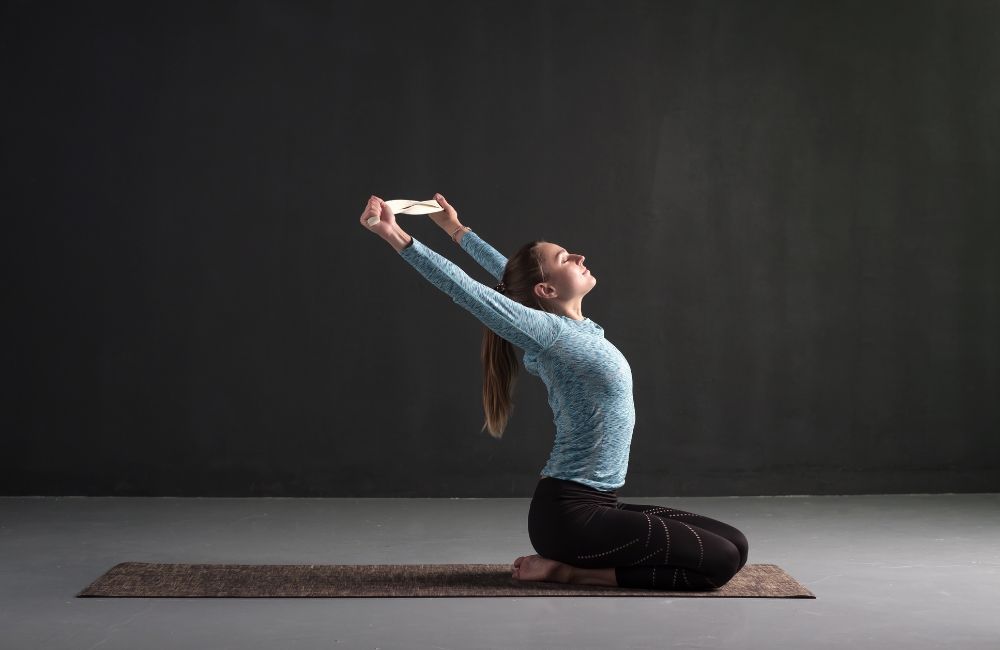
Last but not least, we’ve got a terrific stretch for the pecs and the anterior shoulders.
The chest opener will require the use of a dowel rod or towel, so have one of these at the ready!
How to Perform:
- Grasp the towel in both hands, palms facing down.
- With your elbows straight, pull the towel apart as far as you can as you simultaneously extend your arms up and over your head.
- Hold this stretch for 10 seconds and repeat it 10 times per session.
Conclusion
Rounded shoulders are a pervasive issue in society today. But fear not! If you follow the above exercise plan, you’ll be taking a major step towards preventing and remedying this issue.
If you’re having serious shoulder, neck, or upper back problems, be sure to visit a qualified professional for an in-depth examination.
Works Cited
- Mahmoud, N. F., Hassan, K. A., Abdelmajeed, S. F., Moustafa, I. M., & Silva, A. G. (2019). The Relationship Between Forward Head Posture and Neck Pain: a Systematic Review and Meta-Analysis. Current reviews in musculoskeletal medicine, 12(4), 562–577. https://doi.org/10.1007/s12178-019-09594-y
- Augustsson, S. R., Reinodt, S., Sunesson, E., & Haglund, E. (2022). Short-term effects of postural taping on pain and forward head posture: a randomized controlled trial. BMC musculoskeletal disorders, 23(1), 162. https://doi.org/10.1186/s12891-022-05083-5

